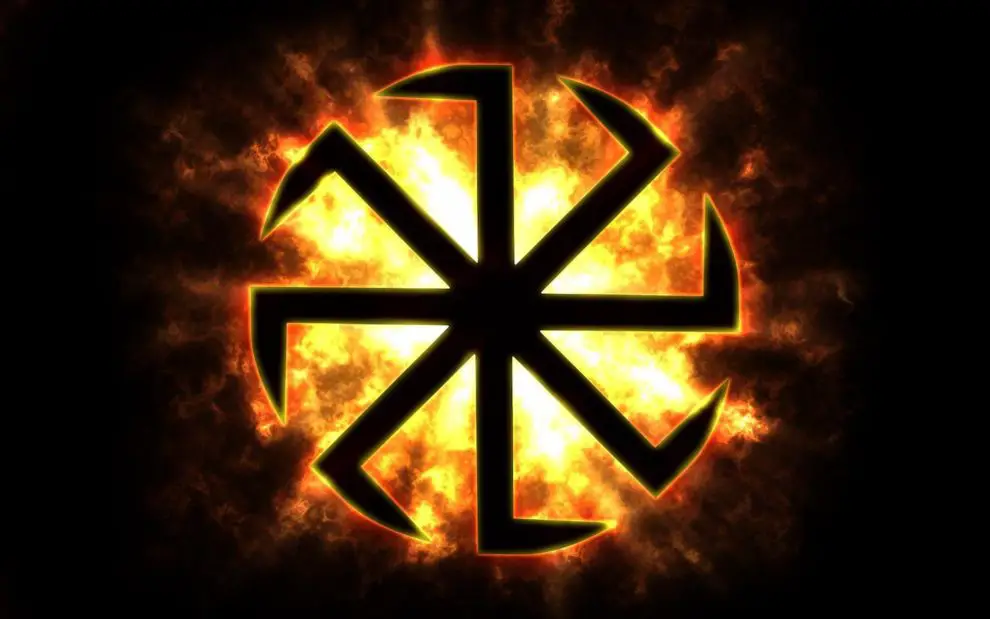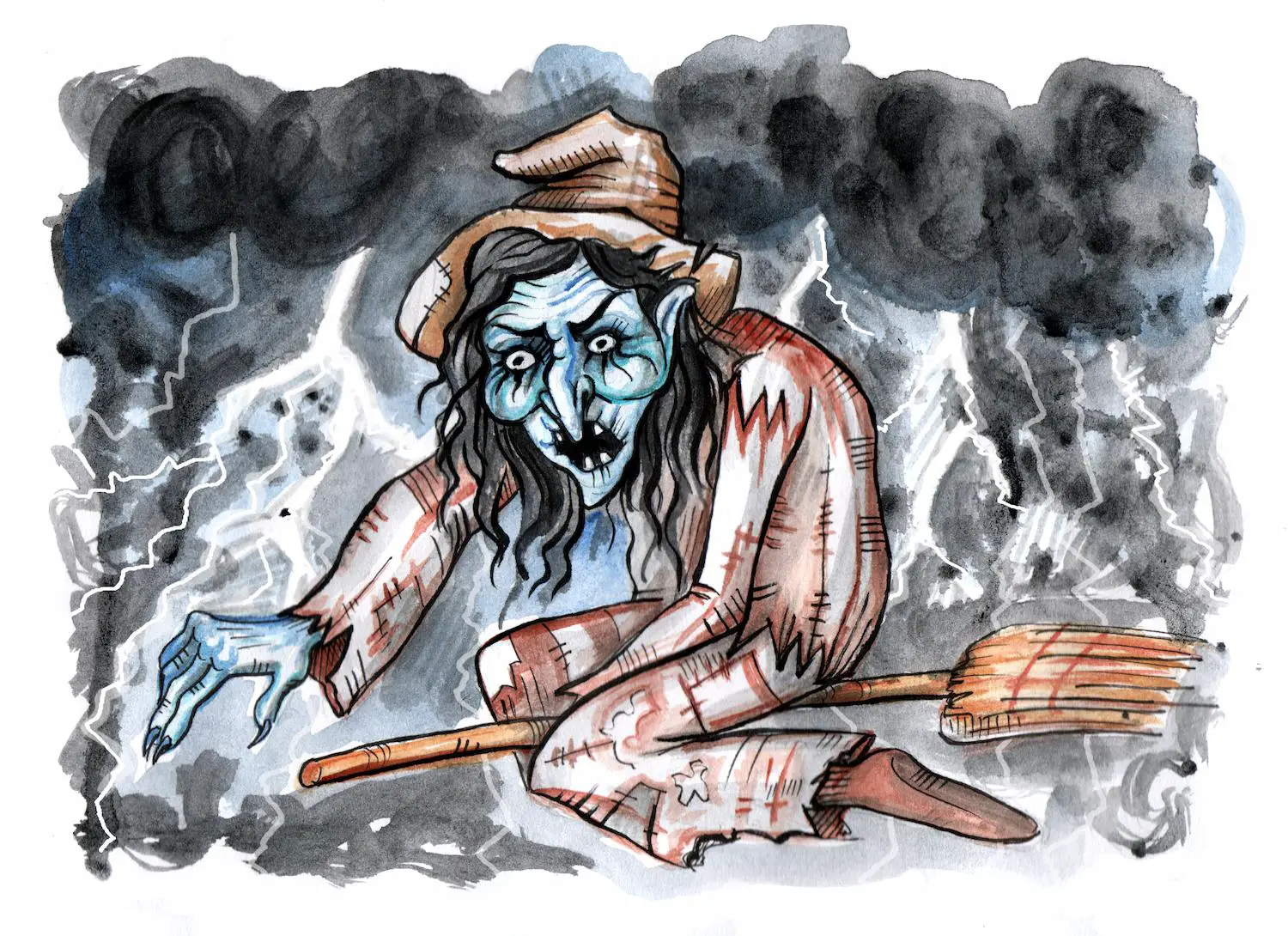Various derivations of the ancient solar symbol, known as swastika, have become infamous because of their misappropriation by the Hitler’s Third Reich. The swastika has become interchangeable with the word “Nazi”, and every image that resembles it raises suspicious concerns.
What most of the people forget or refuse or to acknowledge is thousands of year’s long tradition of this symbol, which occurs in a number of ancient civilizations – Hinduism, Jainism, Buddhism, to name but a few. We even find swastika among the Native Americans [1] or on the drums of the ancient inhabitants of Lapland [2].
One particular shape of swastika, known as kolovrat, was the common solar symbol among the ancient Slavs, and Meet the Slavs features it on the website’s logo. For the sake of education but also in order to address various controversies, this article will try to shed some light to the origin and development of swastika, and its derivate, the Slavic kolovrat.
Table of Contents
Swastika
Meaning and Origins
The word “swastika” is of an Indian (Sanskrit) origin, but the visual symbol seizes even further in history. From the Mediterranean Sea to the Arctic Ocean, the symbol was used in the Bronze Age as a common decorative device. It appears on pottery, bronze fibulae and golden objects from the ancient Troy and the ancient Greece [3].
One of the first prehistoric occurrences of swastika was found in Ukraine, which will later become territory inhabited by the Slavs. British archaeologist and Stanford University professor, Ian Hodder, writes:
Those who know the swastika only as the Nazi Hakenkreuz (Hook Cross) may be surprised to learn that it is one of the oldest, most widely distributed religious symbols in the world. Swastikas appear on Paleolithic carvings on mammoth ivory from the Ukraine, dated 10 000 BC. Swastikas figure on the oldest coinage in India…Sanskrit swastika meant “so be it” or “amen” [4].
In India, swastika was an auspicious symbol, which brought blessings of long life, fortune and good luck. It was considered sacred and connected to benediction. It appeared in both, clockwise and anti-clockwise directions, and symbolized the Sun [5].
Misuse of Swastika by Nazis
Swastika as a symbol of the “Aryan race” was constructed, or rather invented, in the nineteenth century. This non-academic interpretation was initiated by Michael Zmigrodski in Paris, 1889 at the art exhibition [6], and later adopted by Hitler.
Since the myth of the “Aryan race” has been deconstructed and refuted by the modern scholarship, we will not pay attention to the misusage of swastika as the “shield of the Aryan man”. Rather, we are interested in describing the Slavic adoption of this emblem.
Kolovrat
Slavic Kolovrat can be considered a variant of the “original” swastika and it shares the latter’s solar symbolism. It is an attribute of the Slavic solar deity, Svarog [7], appropriately represented by the cyclic shape of the motif.
The movement of the sun is indicated by the rotation of the symbol’s rays which look as if they’re spinning. Etymology of the world, which would translate as the “rotating circle” confirms this visual impression.
The number of kolovrat’s rays differs, but they are all arched at the top. Some of those arches are directed clockwise and others counter-clockwise. Eight – rayed and six – rayed kolovrat are the most common, but those with only three or four rays can be found as well [8].
There are various interpretations of kolovrat apart from it being the sun symbol. For example, it is believed that it stands for the eternal cycle of life and death. Contemporary neo-pagan movements ascribe elaborate interpretations to the kolovrat, and frequently apply the symbol to various items during Maslenitsa festival and to little statues known as “polovetskie baby”.
In addition, several geographical locations (in Slovenia, Croatia, Serbia) bear the name “Kolovrat”. It also functions as a surname, especially among the Czech people.
Misuse of Kolovrat
Certain radical Slavic movements which call for discrimination and ethnic exclusivity also appropriated the kolovrat, making the symbol controversial and causing reluctance and suspicion about its usage.
Such powerful, eye-catching symbols, simple in shape, but loaded with many layers of meaning, will always be attractive to various groups of people. Giving up one’s heritage is certainly not the strategy to fight the ignorance and extremism. Instead, we use to proudly embrace the kolovrat and spread the word about its origin among our respected readership.
Sources
- https://www.tandfonline.com/doi/abs/10.1080/0015587X.1944.9717744?journalCode=rfol20#.VDWXhWd_uSo
- https://opensiuc.lib.siu.edu/cgi/viewcontent.cgi?referer=&httpsredir=1&article=2150&context=ocj&sei-redir=1&referer=http%3A%2F%2Fscholar.google.com%2Fscholar%3Fq%3Dswastika%2Borigin%26btnG%3D%26hl%3Den%26as_sdt%3D0%252C5#search=%22swastika%20origin%22
- https://www.tandfonline.com/doi/abs/10.1080/0015587X.1944.9717744?journalCode=rfol20#.VDWXhWd_uSo
- quoted in: The Swastika: Constructing the Symbol, by Malcolm Quinn, Routledge, 1994, page 12
- http://conference.khuisf.ac.ir/DorsaPax/userfiles/file/pazhohesh/zamin%20mashad/177.pdf
- The Swastika: Constructing the Symbol, by Malcolm Quinn, Routledge, 1994, page 2
- “Slavic and Greek-Roman Mythology, Comparative Mythology” in: BRUKENTHALIA Romanian Cultural History Review, Supplement of Brukenthal. Acta Musei, page 24
- http://www.rastko.rs/antropologija/delo/11949















